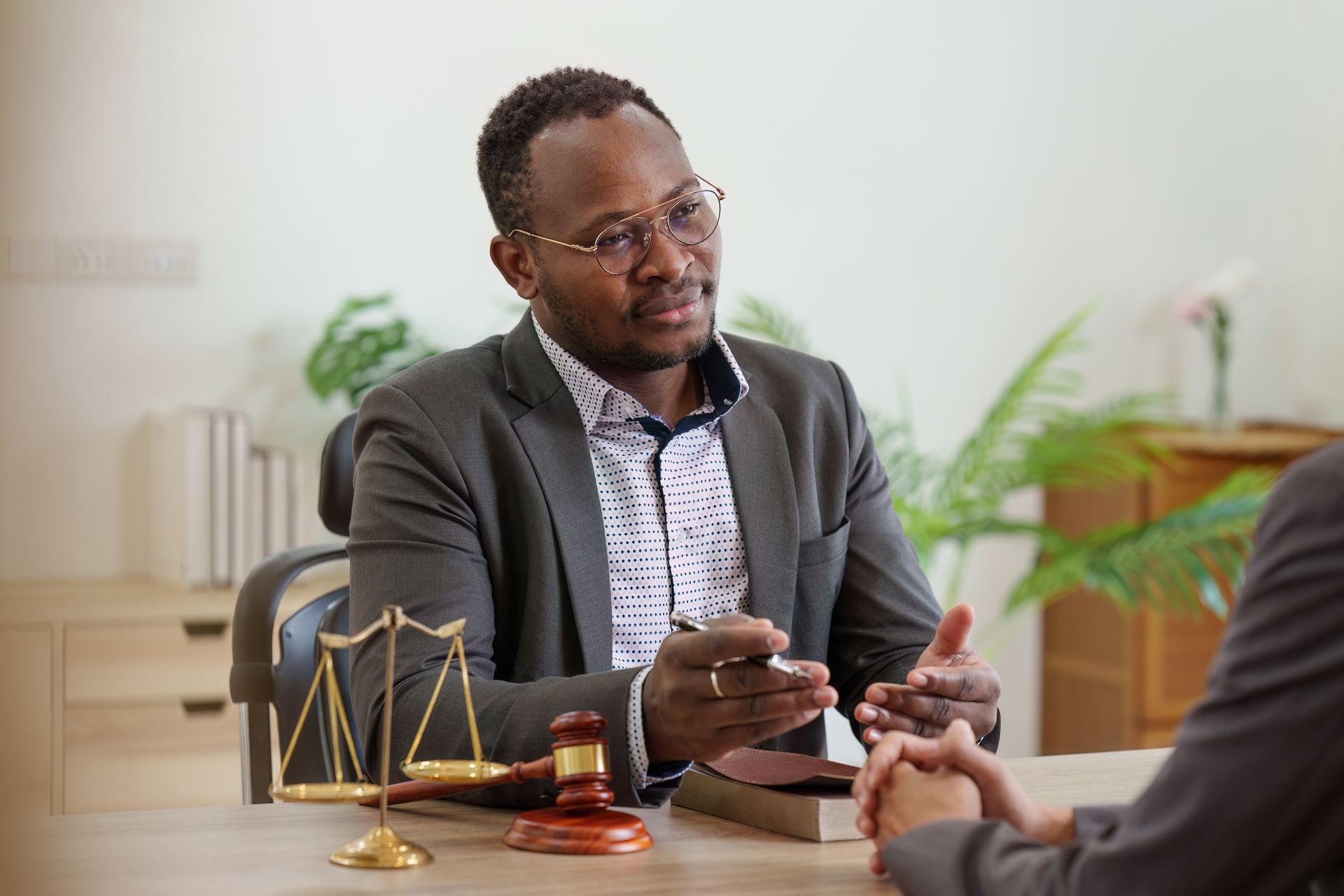What Are The Steps in a Personal Injury Lawsuit?
Understand the Legal Process
Before Filing a Personal Injury Claim
After an accident, life can feel overwhelming. Medical bills pile up, you may be out of work, and you're left wondering what to do next. If your injury was caused by someone else’s negligence, a personal injury lawsuit may be the path to financial recovery. But what exactly does that process look like?
Here’s a step-by-step guide to help you understand what happens during a personal injury lawsuit and what you can expect at each stage.
Understand the Legal Process
Before Filing a Personal Injury Claim
After an accident, life can feel overwhelming. Medical bills pile up, you may be out of work, and you're left wondering what to do next. If your injury was caused by someone else’s negligence, a personal injury lawsuit may be the path to financial recovery. But what exactly does that process look like?
Here’s a step-by-step guide to help you understand what happens during a personal injury lawsuit and what you can expect at each stage.
Step 1:
Seek Medical Attention Immediately
Your health should always be the first priority. Even if injuries seem minor, it’s critical to get examined by a doctor. Medical records serve as essential evidence in your case, documenting the link between the accident and your injuries.

Step 2:
Consult with a
Personal Injury Attorney
An experienced attorney will review the facts, help you understand your rights, and determine whether you have a strong case. Most offer free consultations and only get paid if you win.
Step 3:
Investigation and
Evidence Gathering
Your lawyer will collect evidence such as:
- Accident reports
- Medical records
- Photos or video footage
- Witness statements
- Expert evaluations (if needed)
The goal is to build a solid foundation for your claim.
Step 2: Consult with a Personal Injury Attorney
An experienced attorney will review the facts, help you understand your rights, and determine whether you have a strong case. Most offer free consultations and only get paid if you win.
Step 3: Investigation and Evidence Gathering
Your lawyer will collect evidence such as:
- Accident reports
- Medical records
- Photos or video footage
- Witness statements
- Expert evaluations (if needed)
The goal is to build a solid foundation for your claim.

Step 2: Consult with a Personal Injury Attorney
An experienced attorney will review the facts, help you understand your rights, and determine whether you have a strong case. Most offer free consultations and only get paid if you win.
Step 3: Investigation and Evidence Gathering
Your lawyer will collect evidence such as:
- Accident reports
- Medical records
- Photos or video footage
- Witness statements
- Expert evaluations (if needed)
The goal is to build a solid foundation for your claim.

Step 4:
Demand Letter and
Pre-Lawsuit Negotiation
Before filing a lawsuit, your attorney may send a demand letter to the at-fault party or their insurer. This outlines the facts, your injuries, and the compensation you’re seeking. In many cases, this leads to settlement negotiations and could resolve the matter without going to court.
Step 5:
Filing the Lawsuit
If a fair settlement isn’t reached, your attorney will file a formal complaint in court. The defendant is then served and given time to respond.

Step 4: Demand Letter and
Pre-Lawsuit Negotiation
Before filing a lawsuit, your attorney may send a demand letter to the at-fault party or their insurer. This outlines the facts, your injuries, and the compensation you’re seeking. In many cases, this leads to settlement negotiations and could resolve the matter without going to court.
Step 5: Filing the Lawsuit
If a fair settlement isn’t reached, your attorney will file a formal complaint in court. The defendant is then served and given time to respond.

Step 4: Demand Letter and
Pre-Lawsuit Negotiation
Before filing a lawsuit, your attorney may send a demand letter to the at-fault party or their insurer. This outlines the facts, your injuries, and the compensation you’re seeking. In many cases, this leads to settlement negotiations and could resolve the matter without going to court.
Step 5: Filing the Lawsuit
If a fair settlement isn’t reached, your attorney will file a formal complaint in court. The defendant is then served and given time to respond.

Step 6:
Discovery Phase
This is when both sides exchange information and evidence. It includes:
- Interrogatories (written questions)
- Depositions (sworn testimony)
- Requests for documents
Discovery can take months and plays a major role in shaping the outcome of your case.
Step 7:
Mediation or
Settlement Negotiation
Before trial, courts often encourage mediation. A neutral third party helps both sides try to reach an agreement. Many cases settle during this stage to avoid the uncertainty and cost of trial.
Step 8:
Trial
If no settlement is reached, the case goes to trial. Both sides present their arguments, witnesses, and evidence. A judge or jury then decides liability and damages.
Step 6: Discovery Phase
This is when both sides exchange information and evidence. It includes:
- Interrogatories (written questions)
- Depositions (sworn testimony)
- Requests for documents
Discovery can take months and plays a major role in shaping the outcome of your case.
Step 7: Mediation or Settlement Negotiation
Before trial, courts often encourage mediation. A neutral third party helps both sides try to reach an agreement. Many cases settle during this stage to avoid the uncertainty and cost of trial.
Step 8: Trial
If no settlement is reached, the case goes to trial. Both sides present their arguments, witnesses, and evidence. A judge or jury then decides liability and damages.

Step 6: Discovery Phase
This is when both sides exchange information and evidence. It includes:
- Interrogatories (written questions)
- Depositions (sworn testimony)
- Requests for documents
Discovery can take months and plays a major role in shaping the outcome of your case.
Step 7: Mediation or Settlement Negotiation
Before trial, courts often encourage mediation. A neutral third party helps both sides try to reach an agreement. Many cases settle during this stage to avoid the uncertainty and cost of trial.
Step 8: Trial
If no settlement is reached, the case goes to trial. Both sides present their arguments, witnesses, and evidence. A judge or jury then decides liability and damages.
Step 9:
Appeal(if applicable)
If either party disagrees with the verdict, they may appeal. This can extend the case but is usually only pursued when legal errors are believed to have affected the outcome.
Step 9: Appeal (if applicable)
If either party disagrees with the verdict, they may appeal. This can extend the case but is usually only pursued when legal errors are believed to have affected the outcome.
Step 9: Appeal (if applicable)
If either party disagrees with the verdict, they may appeal. This can extend the case but is usually only pursued when legal errors are believed to have affected the outcome.
A personal injury lawsuit can be complex, but knowing what to expect makes the process less intimidating. From medical treatment to trial, each step is designed to ensure you have a fair shot at compensation.
Injured and unsure of what to do next? Don’t navigate the legal process alone.
Let us help you find the right personal injury attorney to protect your rights and give you peace of mind moving forward,
A personal injury lawsuit can be complex, but knowing what to expect makes the process less intimidating. From medical treatment to trial, each step is designed to ensure you have a fair shot at compensation.
Injured and unsure of what to do next? Don’t navigate the legal process alone.
Let us help you find the right personal injury attorney to protect your rights and give you peace of mind moving forward,

